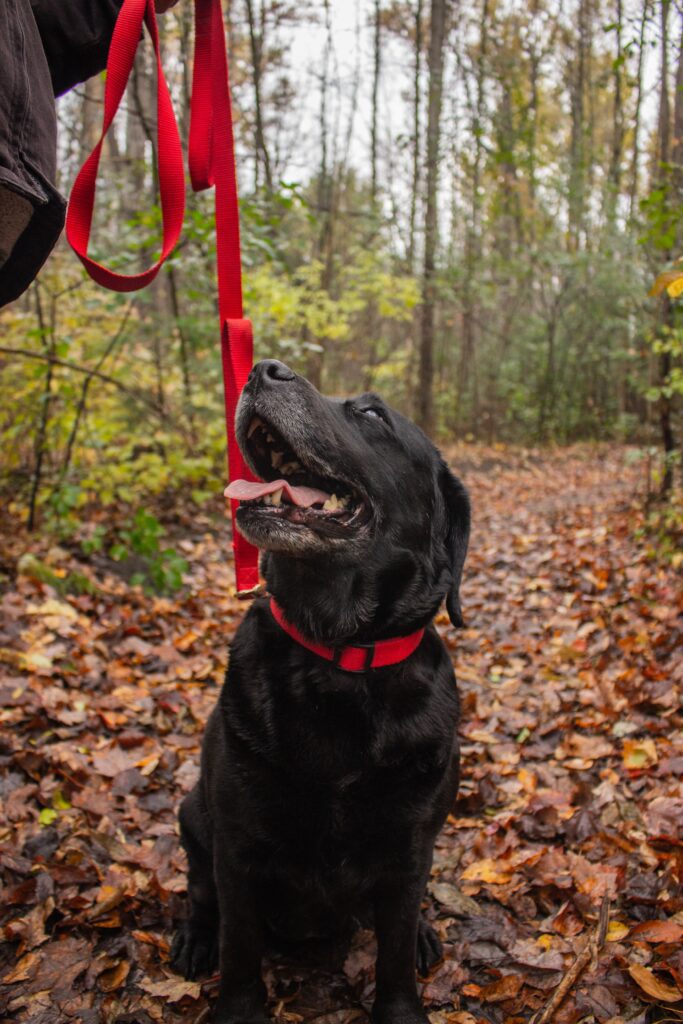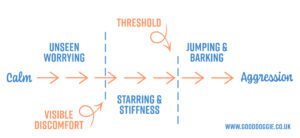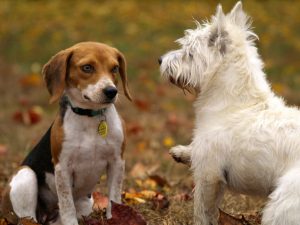Need help with Reactive Dog Behaviour? Join my FREE Facebook support group...
Changing Dog Behaviour using Behaviour Sequences
Behaviour sequences are pretty powerful things when it comes to dog training and behaviour. Dogs recognise them quickly and use them to predict outcomes – good and bad!
What is a behaviour sequence?
A behaviour sequence is a series of behaviours or steps that lead up to one main event. Let’s take a dog walk, for example. You might start by having mid-morning coffee, before announcing you are going for a “W-A-L-K”, then you get out the chair, put your coffee mug in the sink, put on your walking shoes, tell your family your going out, get the lead off the peg, put your phone in your bag, and then put on your coat.
When a routine is repeated often enough, the steps in the sequence will become associated with the main event. So, eventually each step will trigger a similar reaction to the event itself. We can see in the W-A-L-K example, even putting your mid-morning mug in the sink might be enough to make your dog excited to go for a walk. Each additional step in the routine further confirms what’s coming next.
If you’re not sure, pick only one element from your normal walking routine and do that first instead. How did he react? Without the other steps in the sequence, I expect he will be alert, but a little confused too as the sequence has changed. As you go through the rest of the steps (walking shoes, coat, telling people you are going etc) he’ll catch up and know what’s happening.

Good sequences
Some sequences lead to good things such as the one above. As soon as your dog recognises one of the steps in the sequence he’ll start to get excited. The more steps he recognises, the more excited he will get (trigger stacking). For most dogs, doorbells, smells, leads, a sequence of left/right turns in the car, and even waking up can form part of a behaviour sequence.
Not all sequences make a dog excitable or anxious. A particularly calm sequence that many dogs recognise is the bedtime routine. Packing away the cups, turning off lights, coming in from the last pee of the day, and your bedtime “phrase” all lead to bed time. So these things will all trigger a different emotion, hopefully!
Bad sequences
Not all sequences will lead to things your dog might like. A dog that has anxiety about a particular situation might identify a behaviour sequence that leads to that. The car might be a source of anxiety for your dog, and so he might resist getting in the car. If your dog can identify a sequence of behaviour that leads towards getting in the car, he will associate those with the car. They will then trigger the same feeling of anxiety and he’ll attempt to resist those too.
So, in this example, you might use a different harness to normal. Fetching the car specific harness might be the first step. It might be followed by picking up the car keys, turning left out the front door instead of right, different boots, maybe you pack the long lead, or carry your coat. All these things will predict a car trip and trigger that anxiety.
In separation anxiety?
Dogs that don’t like being separated from their owners will have noticed a behaviour sequence and associated that with being left alone. This might include being taken to their bed, being given a kong toy, being told to “watch the house,” specific doors being closed, different bags getting packed, and so on. Once the sequence is triggered, the anxiety will kick in, and by the time you leave they will already be struggling to cope.
Once the fear response has been triggered it can be very difficult to come back from, especially for a dog that is home alone. So, solving separation anxiety related problems often starts with identifying all the steps in this sequence. You’ll either work on them individually, or work on a new routine altogether. Either way, you’re aim is that the dog is as relaxed as possible when you do leave.
Make a new one?
If you can’t identify a sequence, then you can just make a new one. You might do this if you need a create a consistent outcome in a situation. Maybe your dog has an average recall in some situations but perfect in others. You could create a sequence that includes him coming back and once the sequence has been practised enough in the perfect situation, you can then transfer it to the average situation. For example, maybe he’s good at recall in a quiet corner of the park, but not so good at the beach. You start by making a recall routine in the park. It could include; hand in treat bag, raise hand, call dogs name, say “come”, move away, dog comes to you, gets treat. Practise this often enough that the routine becomes a default response, and then head to the beach.
Changing a sequence
Once you have a sequence in place, you can easily switch in, or out, different steps. You might once have invited your dog out for a “walk” but soon realised that he got excited when he heard the word so you started spelling it. That would have calmed the reaction for a while but if the rest of the sequence remained unchanged, you’ll have discovered that he learned to respond to the spelled word. So maybe you started whispering the spelling… you see where I am going! Doorbells are the same, you can change the tone, or switch to a knock but if nothing else changes in the sequence, it will soon be absorbed in too.
Sometimes there is value in trying to desensitise a dog to the steps in an old routine. But most times it is better to just make a new one, or at least change an old one enough that it feels new. As you can see, this will require changing more than just one element. In fact, you’ll need to change more than half of it for it to feel new. This can work to your advantage too, teaching a recall on a lead, and then losing the lead will not upset your recall, as long as the rest of the routine remains consistent.
If you do this, the sequence must lead to something calming, enjoyable or easy to cope with. When you start to use it, the dog will associate the steps with something they can cope with, and that will trigger a calming response instead.
Using a clicker
Using a clicker can form part of a new behaviour sequence. When you introduce your dog to the clicker you create a mini sequence that makes your dog feel good. Click means treat! If you introduce this into a routine it can have a really positive effect on the outcome. So, you could add it into a sequence that was designed to get your dog to the car door, for example.
In this case, you could start by approaching the car from the road side rather than the house. As you walk the final few feet towards the house, you start clicking and head for the car. Maybe you stop there at the start so your dog starts to associate this routine with something he can cope with – ie being near the front of the car. You can always add extra steps to a routine later when he’s comfortable with the first ones. Maybe the next step could be to stand by the car door, then open the door, then sit in the car yourself, before finally inviting him into the car.
Can you spot any other behaviour sequences in your dogs routine?
Are you struggling with your dogs behaviour?
Private Dog Behaviour Consultations are currently available in the Dundee area and beyond, or via zoom. If you are looking for help solving your dogs behaviour and training problems, then please get in touch!


